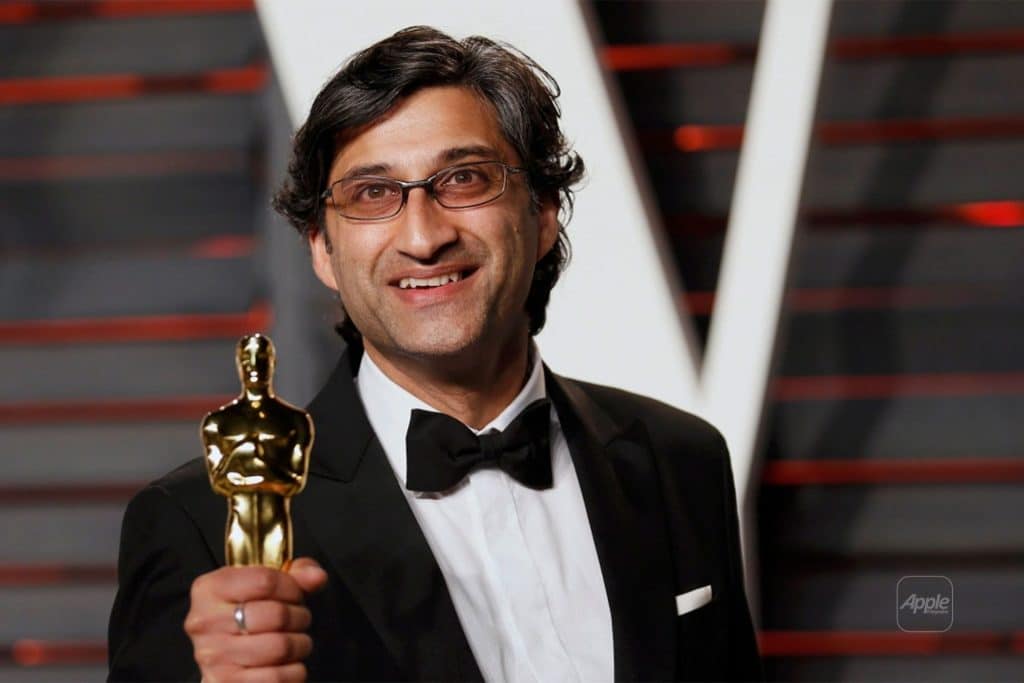Oscar-winning director Asif Kapadia has built his career on rejecting conventional wisdom. From eliminating talking heads in Senna to putting Amy Winehouse’s lyrics directly on screen, Kapadia consistently challenges documentary orthodoxy. His latest film 2073 represents his most radical departure yet: a documentary set in the future that merges archival footage with speculative fiction to examine our present moment through tomorrow’s lens.
Kapadia calls the result “hybrid docufiction,” a form that defies traditional genre boundaries. Rather than analyzing past events, 2073 uses documentary techniques to peer forward, combining footage from 60 countries with dramatic sequences starring Samantha Morton as a survivor in dystopian San Francisco. This approach creates what Kapadia describes as temporal confusion where viewers cannot distinguish between history and prediction.
The Marker Influence
Kapadia drew inspiration from Chris Marker’s influential 1962 short film La Jetée, which told a time-travel story entirely through still photographs. “If he can do it with stills and black and white, can I do a film set in a future by captioning things using archive?” Kapadia wondered. This question launched an ambitious production requiring entirely new working methods.
2073‘s hybrid structure demanded separate creative teams. Chris King, Kapadia’s longtime collaborator, handled documentary sequences while Sylvie Landra edited dramatic portions. “I had two different creative brains for the two different films,” Kapadia notes. “The two editors were not on the film at the same time.” King had previously joined Senna late in the editing process, transforming it into a commercial success after working with another editor, Gregers Sall, during earlier stages.
Working with cinematographer Bradford Young, known for Arrival and Solo: A Star Wars Story, Kapadia shot dramatic sequences on LED stages similar to those used in The Mandalorian. The compressed five-day shooting schedule forced creative solutions that larger budgets might have avoided.
Reality as Foundation
What distinguishes 2073 from traditional science fiction is its documentary foundation. “Every part of the scariest things, the worst things, the most epic things, the most terrifying moments — they’re all factual,” Kapadia emphasizes. News footage, social media clips, and archival material create a speculative narrative that feels disturbingly plausible because it emerges from current realities.
Kapadia’s LED technology enabled another innovation: documentary footage integrated directly into dramatic scenes, playing in backgrounds as Morton’s character navigates her underground world. “All of the people that she sees are from news footage, documentaries, and they’re all shots from around the world,” Kapadia reveals.
This blending of fact with fiction serves Kapadia’s broader mission of helping audiences connect disparate global phenomena. “You may know this, but you may not know that,” he explains, describing how the film juxtaposes footage from different countries to reveal patterns that might otherwise remain invisible.
Distribution Challenges
Creating such an unconventional film proved simpler than distributing it. “A lot of [distributors] just don’t want to touch politics,” Kapadia revealed. “They don’t want to go anywhere near anything political. They don’t want to piss off any world leaders because it might affect where their service is available.”
2073‘s hybrid nature created additional marketing challenges. Distributors struggled to categorize a film that exists between documentary and fiction. Eventually, Neon, known for backing unconventional films, supported Kapadia’s vision. Their decision reflects what Kapadia sees as a broader crisis in independent cinema where “a lot of really strong films are not getting distribution anymore.”
Adaptive Resonance
Kapadia discovered that 2073‘s hybrid approach creates different impacts across audiences. “When I’m in the room, the film changes depending on who’s watching the film because different scenes have a different resonance to that audience,” he observes. Spanish viewers connected strongly with climate crisis elements reflecting recent Valencia floods. New York audiences responded more to political themes. This adaptability suggests hybrid documentary might be particularly suited to addressing complex global issues that manifest differently across contexts.
Sound design for 2073 required similar innovation. Working with composer Antonio Pinto, Kapadia developed an approach where music could be written before footage was edited. They mixed electronic elements with orchestral scores to create soundscapes bridging documentary and science fiction tones.
Technical Innovation
2073‘s production methods offer practical lessons for filmmakers working with limited budgets. Combining archival footage, LED stage technology, and divided editing teams created production value traditionally requiring much larger resources. “Working in nonfiction and working in docs on a smaller budget, with a smaller crew and team, and with fewer executives, lets me follow my instincts,” Kapadia explained.
Kapadia’s willingness to break documentary conventions extends beyond technical methods to interview approaches. For 2073, he spoke with journalists including Maria Ressa, Rana Ayyub, and Carole Cadwalladr, who have documented democracy’s erosion globally. Rather than traditional sit-down conversations, he employed varied approaches suited to each subject’s expertise and circumstances.
Kapadia has consistently rejected industry pressure throughout his career. “Success has many fathers. Failure is an orphan,” he reflects, describing battles over Amy‘s unconventional approach. Studio executives questioned his decision to display lyrics on screen, arguing audiences already knew Amy Winehouse’s songs. “I don’t think you do. I think you’re not really paying attention,” Kapadia responded, defending his choice to make viewers focus on Winehouse’s songwriting rather than just her voice.
2073 represents Kapadia’s most ambitious challenge to documentary boundaries. By merging archival evidence with speculative scenarios, he has created something that transcends traditional genre limitations to become experimental art and urgent journalism simultaneously. His approach suggests new possibilities for how documentary can engage with contemporary crises while maintaining commitment to factual foundation.
“I want cinema to survive,” Kapadia declared. “And in order for cinema to survive, we need independent companies that want to protect that.” His willingness to break documentary rules in service of that survival points toward potential futures for the medium itself.
